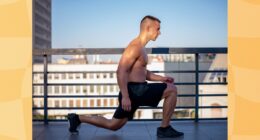As you age, building lean muscle becomes increasingly essential for your well-being and vitality. Yet, the notion that weight training is only for the young persists. In truth, incorporating free-weight exercises helps counteract age-related muscle loss, build lean muscle, boost bone density, and enhance metabolic health and functional independence—a fantastic deal, isn’t it? So I’ve rounded up 10 of the best exercises for seniors to build lean muscle.
Building and preserving muscle mass as you age can be daunting, requiring dedication, perseverance, and time. However, the benefits are significant, and I firmly advocate for their importance. By crafting a personalized fitness regimen that includes free-weight exercises, following a balanced diet rich in protein, fiber, vitamins, and minerals, and getting proper hydration, you can work toward maintaining and even enhancing muscle mass over time.
Uncertain about where to begin at the gym? No need to fret! I have you covered. Many of my senior clients aim to increase lean muscle mass and sculpt a physique that reflects their hard work. Keep reading to discover the 10 best exercises for seniors to build lean muscle that I recommend to help achieve these goals.
Squats
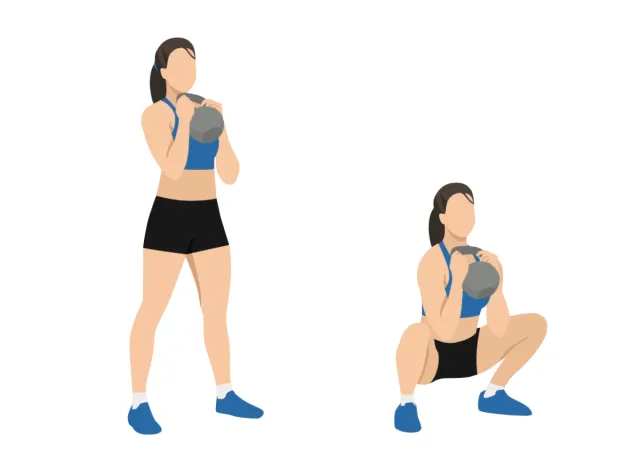

Opt for any variation of the squat—whether it’s goblet, back, or front—to enjoy a powerful compound exercise that offers many benefits as you age. Squats are instrumental in promoting functional movement patterns, fortifying the core, enhancing mobility, and improving lean muscle mass in the lower body. Elevate your routine by integrating tempos and pauses, which ramp up the intensity without the need to add more weight. If executing full-depth squats proves challenging, diversify your regimen with box squats, adjusting the height as your strength and mobility progress.
Stand with your feet hip-width apart, toes forward, and maintain an upright chest and engaged core. Hold a kettlebell or dumbbell in front of your chest, gripping it firmly. Hinge your hips back, and lower into a squat. Lower to a desired depth, then push through your whole foot to return to the starting position. Work through three sets of eight to 12 reps for goblet squats with 90 seconds of rest between sets.
Supported Single-Arm Dumbbell Rows
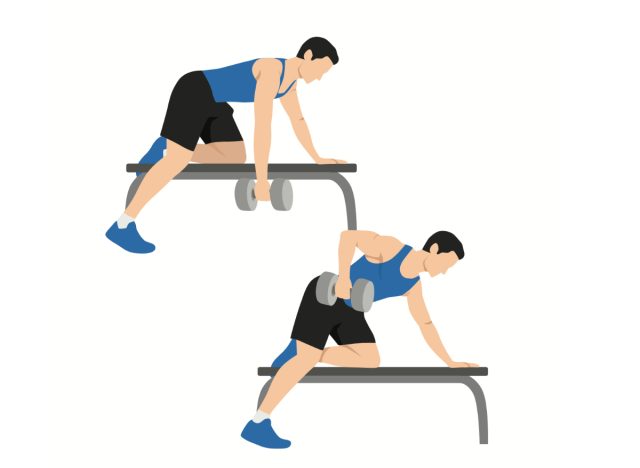

I often incorporate a supported variation of the single-arm dumbbell row into strength and hypertrophy programs for several reasons. Firstly, this variation helps stabilize positions and promotes better posture during exercise. Secondly, providing support enables targeted isolation of the arms, upper back, and lats, facilitating the use of heavier weights compared to traditional bent-over row variations. With this added support, you can handle increased weight and reps, potentially leading to greater muscle growth.
Perform the supported one-arm dumbbell row by kneeling on a bench with one hand supporting your upper body and the other hand gripping a dumbbell placed beside the bench. Keep your back straight and your core engaged as you pull the dumbbell toward your ribcage in a rowing motion, ensuring your elbow stays close to your body. Complete three sets of 10 to 15 reps per side with 90 seconds of rest between sets.
Pushups
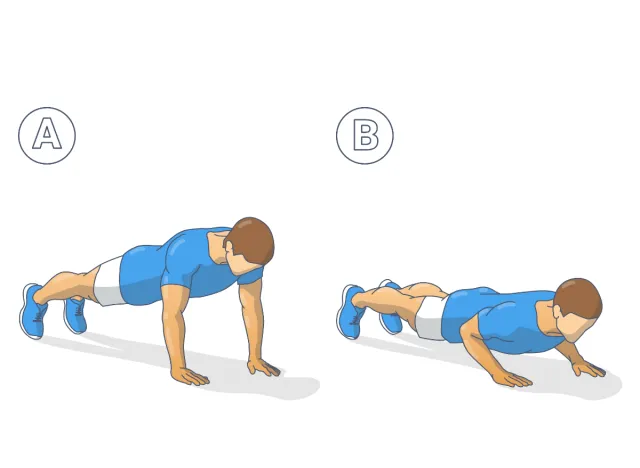

Including exercises that utilize your body weight, such as pushups, is essential for a balanced fitness regimen. Pushups engage the pecs, shoulders, triceps, and core muscles, boosting the development of lean muscle mass in the upper body. Moreover, they play a crucial role in supporting functional movements like transitioning between standing and ground positions, making them indispensable. Use incline pushups to develop strength if you struggle with normal reps.
Start by positioning your hands beneath your shoulders and in a plank position, ensuring your arms are straight. Squeeze your core, lower your body close to the ground, pause, and push back up. Perform three to four sets of six to 12 reps, allowing 90 seconds of rest between sets. If you find it challenging to meet the designated rep range, push yourself to complete as many reps as possible and then conclude the set with negatives—controlled lowering reps starting from the top.
Box Step-ups with a Knee Drive
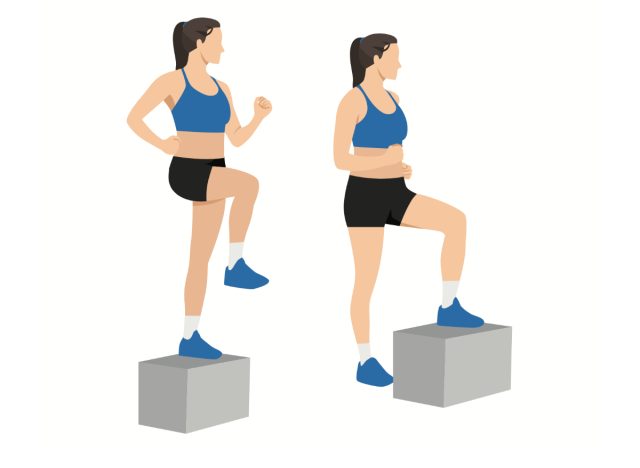

Box step-ups offer a dynamic unilateral compound movement, honing in on the key muscle groups in your lower body. I like to add the knee drive to help emphasize the intent of a strong lower body movement with each rep. They enhance strength and stability while addressing and warding off any potential muscle imbalances.
Moreover, if you’ve experienced the burn after a set of box step-ups, you understand their efficacy in activating your muscles. Even better is their versatility in progression—whether it’s by adding more weight, altering your grip on the weights, or elevating the box height, there are ample ways to challenge yourself and continually advance.
Start by standing before a sturdy box or bench with your feet hip-width apart. Step onto the box with your right foot, pressing through your right foot to push your body upward. Bring your left foot up to meet your right foot on top of the box, then lower yourself back down with control. Alternate legs for the desired number of repetitions, focusing on keeping your chest and core engaged throughout the movement. Adjust the box height to match your fitness level. Perform three to four sets of six to 12 repetitions per side with 90 seconds of rest between supersets.
Half-kneeling Landmine Press
The half-kneeling landmine shoulder press is valuable for building lean muscle mass—especially as you age. It helps target shoulder strength and size, even for individuals with limited overhead mobility. Stabilizing the core and reducing lower back strain enhances safety during the movement. This exercise encourages proper alignment and engagement of the shoulder muscles, leading to improved shoulder stability and functional strength over time.
Start with one knee on the ground and the opposite foot planted firmly in front, creating a stable half-kneeling position. Grasp the end of the barbell with the hand on the same side as the grounded knee, keeping the palm facing inward. With the barbell positioned at shoulder height, engage your core and shoulder muscles, then press the barbell upward, extending your arm without locking the elbow. Lower the barbell back down with control. Complete three sets of six to 12 reps per side with 90 seconds of rest between sets.
Single-leg Hip Thrusts
Single-leg hip thrusts offer a range of free-weight possibilities, such as dumbbells, barbells, or medicine balls. By engaging the hamstrings, glutes, and lower back, this exercise promotes the development of lean muscle mass while mitigating hip asymmetries and imbalances. Strengthening the hips bolsters overall strength and enhances functionality, laying the foundation for a healthier lifestyle.
Sit on the ground with your upper back against a bench, one foot lifted off the ground and the other foot flat. Optionally, add resistance with a weight on your hips. Drive through the grounded foot to lift your hips, forming a straight line from shoulders to knee, then lower back down. Complete three sets of six to 12 reps each with 90 seconds rest between sets.
Seated Leg Extensions
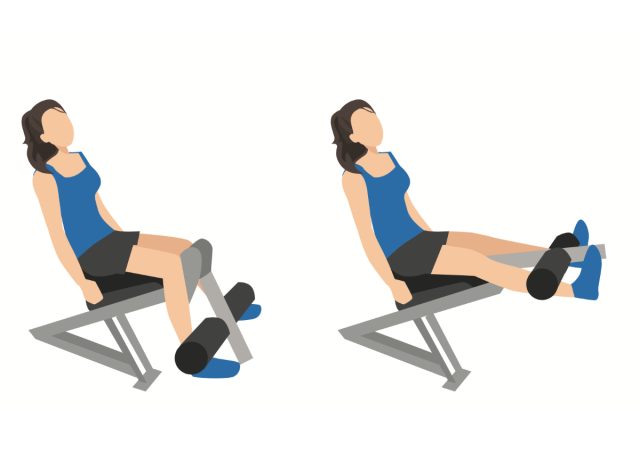

Sitting exercises—especially for seniors—are a safe and effective method that’s low risk with a high reward. You can focus on developing your quadriceps, improving strength and muscle mass, and improving knee health.
It’s pretty simple to knock out reps of leg extensions. Sit with your back against the backrest, grip the handles, and position your feet under the ankle pad. Extend your legs, squeeze the quadriceps, and lower the weight with controlled movements. Start light and increase gradually, maintaining proper form. Complete two to three sets of 12 to 15 reps with 90 seconds of rest between sets.
Kettlebell Swings
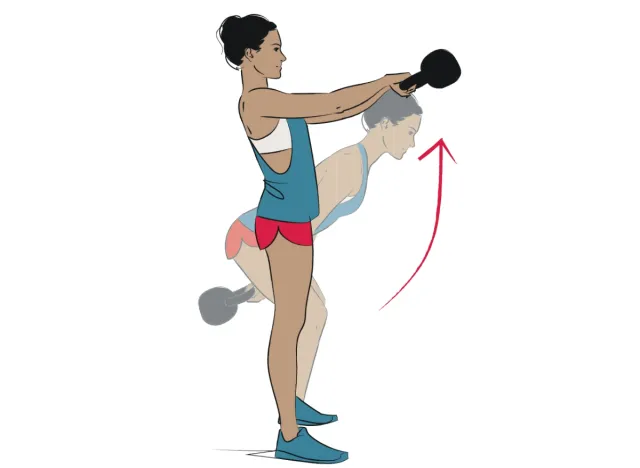

Kettlebell swings ignite your posterior chain with explosive power, sculpting lean muscle in the hamstrings, glutes, and lower back. Whether incorporated into a HIIT session, seamlessly blended into a dynamic warm-up, or featured in conventional muscle-building workouts, they offer versatile benefits for your fitness regimen.
Stand with your feet shoulder-width apart, grasping a kettlebell while standing tall. Hinge at your hips, maintaining straight arms, then explosively drive your hips forward to swing the kettlebell to chest height, powered by momentum from your lower body. Return the kettlebell between your legs in the hinge position, and repeat the movement. Complete three sets of eight to 15 reps with 90 seconds of rest between sets.
Dead Bugs
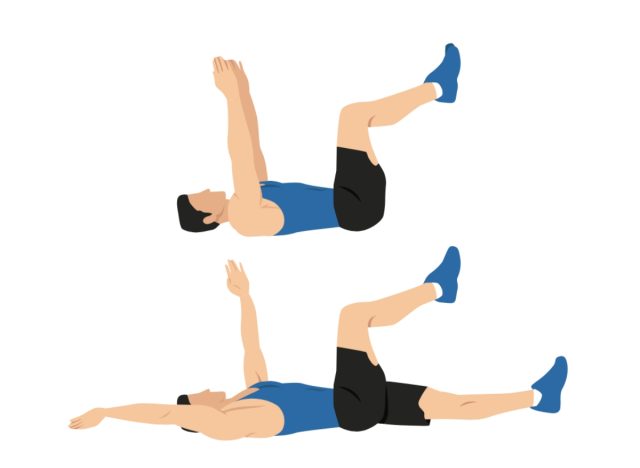

Dead bugs stand out as an excellent core exercise for building lean muscle mass and enhancing stability. They engage the entire core, including the lower back, by involving both the upper and lower body in functional movement patterns. By executing each repetition with precision and control, you can maximize the benefits of dead bugs.
Furthermore, the versatility of dead bugs allows for endless variations, offering opportunities to challenge and progress your core strength continually. Once you’ve mastered the traditional dead bug, don’t hesitate to explore other variations to keep your workouts dynamic and effective.
To perform dead bugs, lie on your back with your arms extended (straightened) upward and your legs raised at a 90-degree angle. Engage your core, press your lower back into the floor, and slowly lower one leg and the opposite arm toward the floor. Return to the starting position, and repeat on the other side. Complete three sets of six to 10 reps per side with 90 seconds of rest between sets.
Loaded Carry Variations
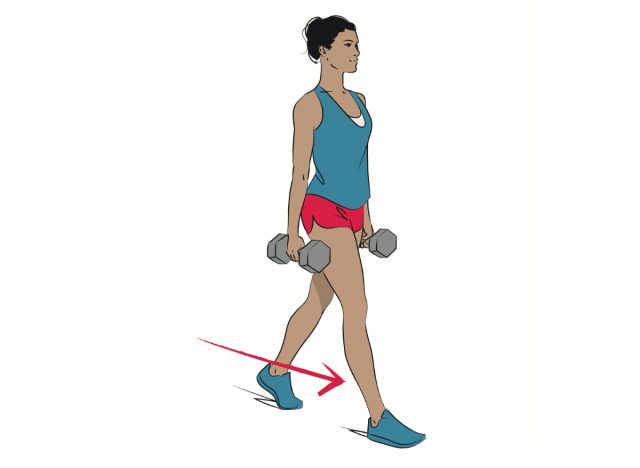

Loaded carry variations are an excellent exercise staple in many of my programs. They focus on your core, lower and upper back, and shoulders while challenging your grip strength. Few exercises rival their functional benefits in a workout. Utilize farmer, suitcase, overhead, and front rack carries to make the exercise specific to your goals and to keep the workouts fresh.
Select a pair or singular dumbbell or kettlebell, depending on the variation you’re executing. Walk in a controlled manner, focusing on squeezing and stabilizing your core and maintaining a tall posture. Carry the weight for a set distance or time, then switch hands. Start with a lighter weight and progress gradually for optimal results. Complete two to three sets of 30 to 60-second reps with 120 seconds between each set.







